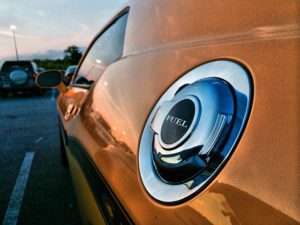
Getting timely auto repair for your car, truck or SUV is a fact of life if you want to keep it running at its best for as long as possible. Today, a reliable ASE Certified auto repair shop can diagnose and fix your car trouble in less time than ever before. Thanks to advances in technology and diagnostics equipment, there’s generally less guess work involved in auto repair than their used to be, particularly for foreign auto manufacturers, including Toyota, Honda, Mercedes Benz, VW and BMW.
Though mechanics can diagnose and repair problems with more ease and accuracy, car repair itself remains a necessity for every vehicle owner. Even if you take good care of your vehicle with regular auto maintenance and smart driving habits, you still can’t completely avoid some necessary auto repair though you can minimize it. Here are the five most common auto repairs reported for newer model cars:
Loose Gas Cap Ranks as Most Common Auto Repair
 Okay, so we know that tightening the gas cap on your vehicle hardly constitutes as valid engine repair (or maybe it does for some people). Yet in newer model vehicles, this is the most commonly reported problem when the Check Engine Light illuminates or when a new car failed smog. Why?
Okay, so we know that tightening the gas cap on your vehicle hardly constitutes as valid engine repair (or maybe it does for some people). Yet in newer model vehicles, this is the most commonly reported problem when the Check Engine Light illuminates or when a new car failed smog. Why?
According to CarMD, this is because cars today are so finely calibrated that the improper sealing caused by a faulty or loose gas cap can signal improper pressure levels according to vehicle sensors. If these devices sense or get a reading of pressure levels that are too high or low, they will signal for the Check Engine Light to go on. (This problem seems to be widely reported among Volkswagens in particular.) So before you freak out and immediately have your car towed to your nearest San Diego auto repair shop when the Check Engine Light goes on, tighten your gas cap first to see if that solves the problem.
This Engine Repair Is Second Most Common
While these advanced sensors can detect minor auto problems before they become major ones and have a slew of other benefits, they are not without their shortcomings. The not-cheap oxygen sensor replacement ranked as the second most common auto repair for new car models. This engine repair may cost in the range of $225-$275 depending on your model, and is all thanks to advances in electronics and sensor technology.
A vital part of the modern car engines, oxygen sensors monitor the engine’s air to fuel ratio. A proper mixture is essential for an efficient operating engine. With time, oxygen sensors will start to produce delayed or lagged responses that will cause inefficiencies in the functioning of the engine. If you notice poorer fuel efficiency, irregular idle times or even misfiring, this could signal engine repair in the form of oxygen sensor replacement. It is suggested that this engine repair be performed approximately every 50,000 to 60,000 miles but check your vehicle’s manual for more specific guidelines. If it is the O2 sensor, just be glad it’s not the catalytic converter which could be up to 5 times the cost.
Stinky Exhaust? That’s a Signal for this Third Most Common Auto Repair
Vehicles today are more fuel efficient than they ever had before. One device that makes this possible is the catalytic converter, which converts harmful pollutants into less harmful ones via the car’s exhaust system. You likely wouldn’t be able to pass emissions tests without this important piece.
If your catalytic converter goes bust, however, it won’t be an inexpensive fix. The replacement of such a part including labor will run more than $1200 in most cases. Other than failing a vehicle emissions test, you can know your catalytic converter isn’t functioning properly due to its distinct rotten eggs smell.
Engine Turnover Troubles: Fourth (and Fifth) Most Common Auto Repairs
The final auto repairs you are most likely to encounter have to do is ignition coil replacement service. This type of auto service will run you about $200 or more if you also have to get the spark plug replaced. The ignition coil functions to properly convert low wattage electrical power into high wattage electrical power that is usable by the engine system. Simply stated, the ignition coil system is what allows your vehicle to start up when you put the key in the ignition and turn it over. The modern ignition coil system replaces the older distributer system, which would “distribute” the charge from the ignition to the engine component.
Without a well-conditioned ignition coil, the car won’t start properly and in time this could lead to more expensive engine repair. If the make and model of your vehicle has coil over plugs also called multiple coil ignition systems, then you will also have to replace the spark plugs when you replace the ignition coil.
So whether you drive a BMW, Mercedes Benz or Toyota, these are the most widely reported auto repairs for newer model vehicles.






